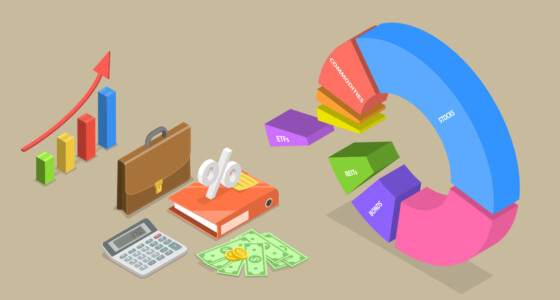

Do you want to know what is the repo rate, what is the meaning of reverse repo and the difference between the two? Then, you are in the right place. Let’s dive into more details!
What is the repo rate?
In banking, the repo rate is related to the repurchase option or agreement. Sometimes commercial banks borrow funds from the central one to preserve liquidity in the event of a funding shortfall or because of specific legislative requirements. These short-term loans are made available by the central bank in exchange for securities like Treasury Bills or Government Bonds and then reimbursed at the current repo rate. That is, the repo rate is the interest rate at which a nation’s central bank loans funds to commercial ones.
In the event of inflationary pressures, central banks raise the repo rates to discourage commercial ones from borrowing from them. This results in a reduced amount of funds available in circulation in the economy, which aids in halting inflation and boosting bank liquidity.
Alternatively, the repo rate is lowered during recessions or when additional capital is required to promote market expansion. Suppose the nation is experiencing a cash shortage. In that case, the central bank will lower the repo rate to assist banks in increasing their borrowing and providing loans to the general population at lower rates.
A change in the repo rate eventually has an impact on public borrowings such as home loans, EMIs, etc., since it forces commercial banks to pay higher interest rates for the money that is borrowed from them. Numerous financial and investment instruments are also indirectly reliant on the repo rate, from the interest commercial banks charge on loans to the returns on deposits.
The liquidity adjustment facility also includes the reverses repo rate, which we will discuss in more detail below.
What is a reverse repo rate?
To control the movement of money in the market, the central bank can also employ a monetary policy known as the reverse repo rate. In times of necessity, it can borrow money from private banks and pay them interest at the current rate. The reverse repo rate is often less expensive than the repo rate at any particular time.
To encourage commercial banks to deposit funds with the central bank and receive interest when the economy experiences inflation, the central bank raises the reverse repo rate. Consequently, this removes too many funds from the market and lowers the amount of cash accessible for borrowing by the general people.
What is the difference between repo rate and reverse repo rate?
Reverse repo rate is unarguably one of the most crucial concepts we must know to comprehend what repo rate is. The distinctions include the following:
- The central bank charges a repo rate on the money it lends to commercial banks and other financial institutions. On the other hand, the rate the central bank pays commercial ones to park their excess funds is what is known as the reverse repo rate.
- Reverse repo rates entail the movement of funds from one account to another, whereas repo rates involve selling assets that will be repurchased in the future.
- A lower repo rate lowers the cost of funding for commercial banks and results in lower interest rates on loans. When the reverse repo rate is low, the money supply in the economy grows as banks lend more and reduce their deposits with the central one.
- The reverse repo rate is never more than the repo rate. For example, as of December 2022, the current repo rate of the Reserve Bank of India (RBI) is what is calculated as 6.25%, and the reverse repo rate is 3.35%.
In general, the reverse repo rate is used to control cash flow in the market, whereas the repo rate is needed to maintain liquidity in the economy (reduce market inflation).

What is the bank rate?
The interest rate at which a country’s central bank lends money to domestic banks, frequently in the form of extremely short-term loans, is known as the bank rate. Its management is an important technique by which central banks influence economic activity. By reducing the cost of borrowing funds, lower bank rates can encourage economic growth, and higher ones can restrain it when inflation is out of control.
What is the difference between the repo and bank rates?
The central bank lends funds to the commercial one in the repo rate scenario by acquiring government securities. But in the event of a bank rate, commercial banks may obtain loans from the central one without having to sell any government securities.
Because the bank rate is a crucial aspect in determining what interest rate loans should be issued to consumers, it directly impacts the customer. On the other hand, the public is not immediately affected by the repo rate.
What is bps in repo rate?
Basis points, also referred to as “bps” or “bips”, are a unit of measurement used to express the rate of change in an index or other benchmark or the percentage change in the value of financial instruments such as bonds.
Basis points are also needed to describe changes in interest rates. One percent change is equal to 100 bps; hence one bp equals 0.01% of a percentage change.
By multiplying the percentage by 100, we can transform it into a basis point. On the contrary, to convert bips into percentages, we need to divide their number by 100.
For instance, 40 bps is what is calculated as 40/100=0.4% in the repo rate.
What is affected by the repo rate?
The repo rate also significantly affects the following:
- Increasing the interest rate
Lending rates are correlated with the repo rate of the central bank. Banks’ cost of borrowing rises along with the repo rate, which is then passed on to account holders in the form of higher interest rates on loans and deposits. It results in higher equated monthly installments (EMIs) for new loans and longer terms for current floating-rate ones. As a result, business borrowing costs also increase.
- Decrease in demand
When interest rates climb, it becomes less appealing to borrow funds from a bank. The market’s investment and money supply are slowed down as a result.
Declining purchasing power causes a slowdown in demand, i.e., consumers are hesitant to purchase expensive products. However, the fact that people start spending less helps to keep inflation under control.
Note! The repo rate also plays a vital role in the stock market, so understanding it is essential for investors.
What is the effect of the repo rate on the stock market?
The market experiences an immediate impact whenever the repo rate increases. Stock prices will rise, at the very least temporarily, if the market reacts favorably to the central bank’s decision. For instance, an increase in the repo rate in line with forecasts is news usually welcomed by the market. The sentiment can be boosted by assurances from the central bank governor that inflation would remain within the comfort zone in the quarter.
However, the repo rate can reduce profitability in some sectors as interest rates and the stock market are inversely related. What typically occurs in this situation is that the increase in the repo rate forces businesses to reduce their spending. The most affected industries can be those that require a lot of capital, such as real estate and infrastructure. Firms in these industries typically need a lot of cash and carry a lot of debt.
Since higher interest rates might cause high-debt enterprises to fail, their expansion plans are impacted. This causes the companies’ growth to slow down, impacting their revenues and profits. In this case, the sentiment of stock market participants declines as delayed expansion affects how profitable investing is.
The bottom line
Being related to the repurchase option or repurchase agreement, the repo rate is typically thought of as a mechanism that reduces credit risk. However, investors should be careful as there is also a risk associated with repurchase agreements. It lies in the fact that the stock’s value may decrease since the original sale, leaving the buyer with little choice but to either hold the security, which they never intended to keep for the long term, or sell it at a loss.
We hope this article has helped you understand what kind of tool the repo rate is. If you are an investor from India, you can further test your knowledge of the banking sector in general and what the repo rate is by answering multiple-choice questions (MCQs) in Hindi or English.








